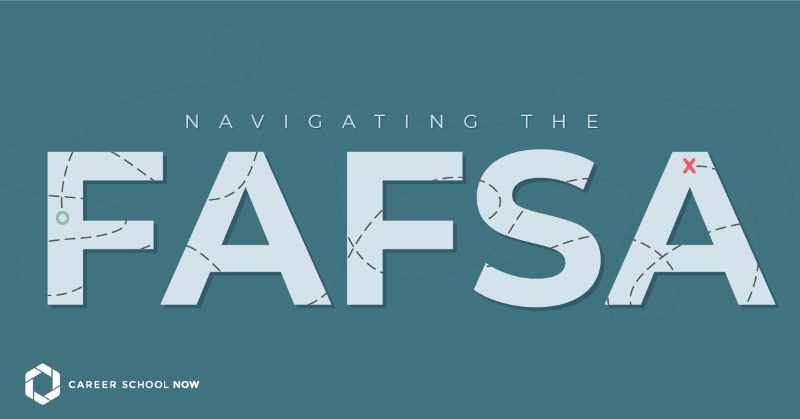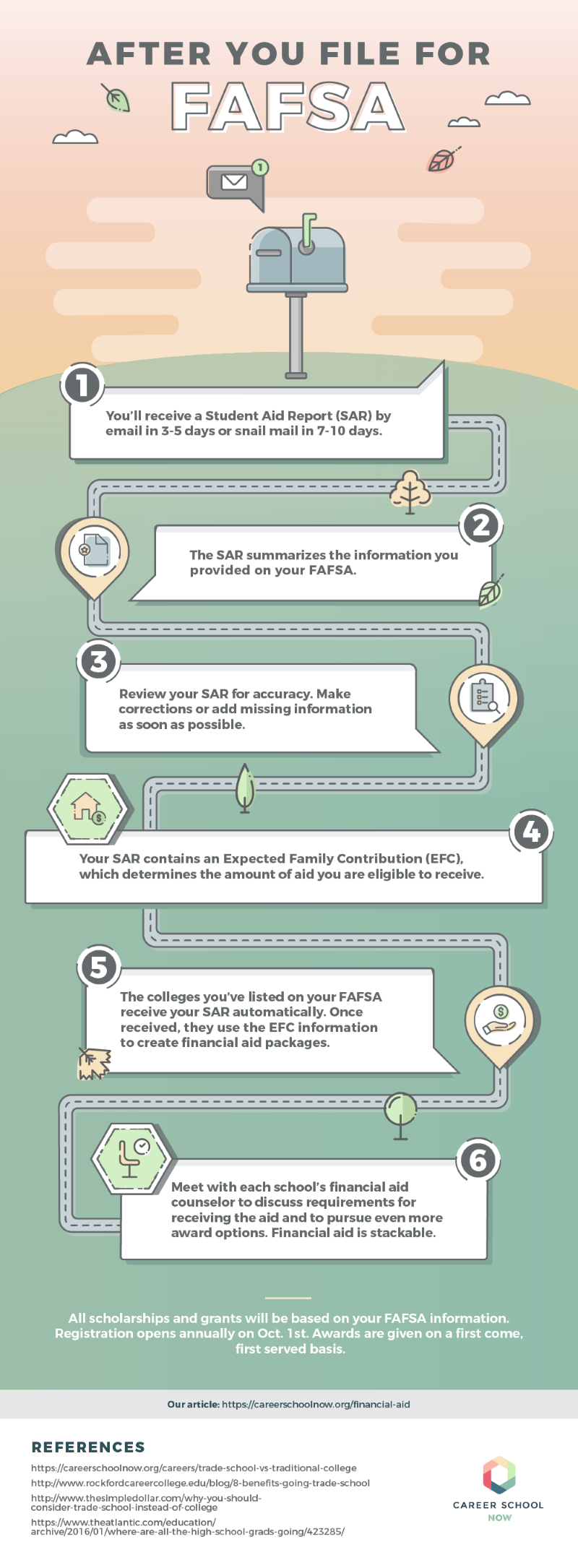
The Free Application for Federal Student Aid, aka FAFSA, has to be completed correctly if you’re going to be applying for financial aid for college. The FAFSA is the single most important “document” you’ll be filling out when it comes to getting financial aid to help pay for your college or trade school. It’s also what the rest of your scholarship awards are based on, so it’s imperative you get it done, and done right.
Registration begins October 1st of every year. It doesn’t matter if you have family money or no money at all, the financial aid is awarded on a first come, first served basis. So, it’s best to apply as close to the opening date as possible to receive the best financial awards for college.
If you follow the steps shown on the infographic, you shouldn’t have any troubles applying for or receiving monies to help you pay for college.
How to Apply for FAFSA: Infographic

How to Apply for the FAFSA
- Create your FSA ID account on the FAFSA website.
- If you’re using your parents’ (legal or biological) financial information, they’ll need to create their own FSA ID. Have everything ready to go to save time.
- Two tax years are available, and you can choose both. Simply pick the dates you’ll be attending college and need the financial aid for.
- Create a save key. This will require a PIN number. Write it down somewhere secure.
- Fill out all of the student information completely and accurately. You can add up to 10 colleges. Do NOT leave anything blank.
- Demographics and financial information comes next. If you are a dependent, get your parents. They’ll need to fill out their portion of the FAFSA now.
- Electronically sign and submit using your FSA ID.
After You File for FAFSA: Infographic

After You File for the FAFSA
- You will receive a Student Aid Report (SAR) by email in 3-5 days or snail mail in 7-10 days.
- The SAR summarizes the information you provided on your FAFSA.
- Review your SAR for accuracy. Make corrections or add missing information as soon as possible.
- Your SAR contains an Expected Family Contribution (EFC), which determines the amount of aid you are eligible to receive.
- The colleges you’ve listed on your FAFSA receive your SAR automatically. Once received, they use the EFC information to create financial aid packages.
- Meet with each school’s financial aid counselor to discuss requirements for receiving the aid and to pursue even more award options. Financial aid is stackable.
To find out more information on financial aid, make sure to visit our detailed financial aid guide here.